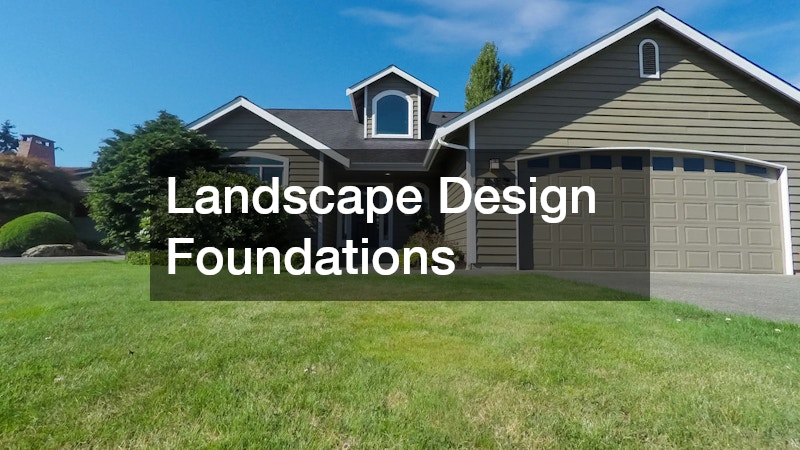Most homeowners gauge a property’s exterior in seconds, and that snap judgment influences everything from buyer interest to neighborhood pride. In real estate circles, analysts regularly cite data showing that thoughtful front-of house investments can deliver returns rivaling new kitchens or baths. Whether you plan to sell in two years or stay for twenty, improving the outward face of your residence delivers benefits that extend well beyond looks. This detailed guide explains why improving curb appeal matters and how to approach the task with a strategic mindset. Along the way, we will highlight specific trades and product choices, giving you the insight needed to turn idle sketches into lasting upgrades.
Market Value and First Impressions
A house that looks inviting from the street typically commands a premium price. Real estate agents confirm that buyers who fall in love with a façade are more forgiving of interior quirks. Clean roofs, vivid paint, and healthy lawns signal that the entire structure has been maintained. As a result, appraisers often assign higher condition ratings, which translate into larger loan amounts for buyers and better equity positions for sellers. Even homeowners who are years away from listing benefit because property taxes and refinancing terms hinge on perceived value.
Improving curb appeal, therefore, acts like compound interest. Each upgrade amplifies the effect of the next. A newly painted porch looks brighter when framed by vibrant landscaping, and a fresh driveway appears sleeker beneath an upgraded roofline. By treating exterior elements as an interconnected system, owners gain momentum that echoes throughout the entire property value chain.
Faster Sales and Lower Carrying Costs
Days on market mean money out of pocket, making. Utility bills, mortgage payments, and insurance premiums continue while a house sits unsold. Exterior projects that draw attention online and in person reduce that drag. For instance, updated siding photographs crisply, encouraging potential buyers to schedule tours the moment a listing posts. During showings, a manicured yard entices visitors to linger as they imagine playing catch or hosting barbecues. The effect accelerates offers and often nudges prices higher, closing the gap between asking and final sale.
Improving curb appeal also protects against price reductions. Homes that fail to attract early bids commonly see incremental markdowns, eroding net proceeds. In contrast, a pristine entrance and well-lit walkways keep buyer interest high, helping sellers hold firm on target values.
Neighborhood Influence
Exterior upgrades never stand alone. A single revitalized front yard can spark a cascade of improvements along an entire block. When neighbors see crisp edging, modern doors, and clean driveways, they become more motivated to weed gardens or repaint trim. Over time, the collective effect lifts neighborhood pride and comparable sales. Municipal planners notice well-kept streets and may prioritize resources like park upgrades or road resurfacing, further boosting resident satisfaction.
Homeowner associations often include appearance guidelines that can feel restrictive, yet following them can pay dividends. Uniform fence heights, coordinated mailboxes, and consistent street trees create cohesive streetscapes that appraisers reward. Improving curb appeal therefore becomes both an individual and communal win, one that sustains property values even during broader market dips.
Health, Wellness, and Everyday Enjoyment
Curb appeal is not strictly financial. A beautiful yard and tidy façade encourage homeowners to spend more time outside. Exposure to natural light and fresh air can reduce stress, lower blood pressure, and improve sleep quality. A front porch with comfortable seating invites morning coffee rituals, while neatly trimmed hedges frame relaxing sunset views. Families benefit when children have safe, soft grass for play, and pets enjoy cooler surface temperatures thanks to shade trees.
Incorporating sensory elements like fragrant flowers and rustling ornamental grasses adds therapeutic value. Small water features mask street noise, and butterfly-friendly plantings support local ecosystems. By weaving mindfulness principles into the design process, you turn routine walks to the mailbox into restorative mini breaks.
Landscape Design Foundations
High-impact transformations start with soil and plants. Consulting local landscapers ensures selected species thrive in native conditions and align with your maintenance tolerance. They might recommend layering heights to guide the eye: groundcover along borders, mid-level perennials behind, and taller shrubs at the foundation. This arrangement reveals seasonal color while keeping windows unobstructed.
Hardscape paths of natural stone or textured pavers prevent muddy shortcuts and direct visitors toward the front door. Mulch holds moisture, suppresses weeds, and provides visual contrast against foliage. Proper edging maintains crisp separations between beds and turf. When executed well, this framework multiplies the effect of any additional features like benches or sculptures.
Sustainable Lawn Care
Even the best plant palette fails without ongoing attention when improving curb appeal. Professional lawn care services tailor fertilization schedules to local soil pH, manage aeration to support root growth, and calibrate irrigation for drought periods. In colder regions, technicians apply winterizing treatments that shield grass crowns from freeze damage. In warm zones, dethatching and topdressing promote dense coverage that crowds out weeds.
When sprinkler systems run, smart controllers adjust watering based on rainfall data, conserving resources while preserving lush textures. Homeowners often bundle annual service packages to guarantee consistency during vacations or busy work stretches. A reliably green, even lawn reinforces the visual impact of architectural upgrades and tiptoes property value upward.
Roofing Upgrades for Form and Function
Roofs claim the largest uninterrupted visual plane on most homes. Stained shingles or moss patches can cancel out meticulous garden planning. Engaging local residential roofers to inspect flashing, decking, and ventilation pinpoints leaks or energy losses. If replacement becomes necessary, modern architectural asphalt, metal panels, or composite shakes offer aesthetic variety and longer life in addition to improving surb appeal.
Color selection matters. Lighter shades reflect heat in sunny climates, reducing attic temperatures and air-conditioning loads. Darker shingles absorb warmth, encouraging snow melt in northern areas. Coordinating new roofing with drip edge colors, gutter styles, and fascia paint produces a seamless top-down transformation that complements ground-level landscaping.
Driveway Renewal and Protection
A driveway is literally underfoot, yet many owners overlook its impact. Weathered surfaces full of cracks and stains make the entire frontage seem neglected. Installing fresh asphalt driveways refreshes sight lines instantly. Asphalt remains pliable, accommodating freeze-thaw movement better than rigid concrete. For properties that already have asphalt, sealcoating every two or three years preserves color, fills micro fissures, and keeps water out of the base layer.
Edging driveways with brick pavers or decorative stones enhances definition. Solar powered bollards add safety and elegance at night. When guests or buyers pull up, the uniform dark surface signals diligent care, aligning expectations for the rest of the tour.
Leisure Amenities and Water Features
Outdoor recreation areas elevate a home from ordinary to standout. A custom spa installed by a local hot tub company offers year-round hydrotherapy and fits modest decks. For larger parcels, pool companies can design free-form basins with sun shelves, built-in seating, and energy efficient heaters. Responsible owners incorporate swimming pool water recycling systems that filter water for reuse, saving thousands of gallons annually.
Beyond aquatic installations, fire pits framed by natural stone and comfortable seating foster evening gatherings. Covered pergolas shade grilling stations during midday heat. Each leisure item not only enhances living quality but also acts as a focal point in real estate marketing photos, nudging offers higher.
Patios and Transitional Surfaces
Patios serve as connective tissue between interior rooms and outdoor areas. Durable materials from trusted patio suppliers, such as porcelain pavers or stamped concrete, resist staining and freeze damage. Installing patterns like herringbone or offset rectangles lends subtle sophistication. Areas dedicated to dining, conversation, and sunbathing can be defined by changes in elevation or contrasting border stones.
Lighting should be layered. Step lights prevent trips, while string lights overhead create cozy ambience. Robust furniture constructed with powder coated aluminum outlasts cheaper alternatives and retains color. This investment in quality ensures the patio remains striking rather than shabby after the first few seasons.
Storage and Garage Doors
A tidy yard relies on efficient storage. Inside the garage, installing a new insulated roll up door streamlines operation and adds a crisp visual seal. Window inserts allow daylight without exposing valuables, and modern gaskets reduce drafts. Matching door panel colors to trim unites the façade, while Wi-Fi enabled openers integrate security and convenience features. Task lighting inside the garage encourages regular organization, preventing clutter from spilling into drive zones.
Siding Renewal and Trim Refinement
Old siding dulls even vibrant landscapes. Upgrading to fiber cement or high-grade vinyl provides fade resistance, insect proofing, and minimal upkeep. Textured panels that mimic cedar shakes add depth to gable ends, while vertical board and batten sections break up broad wall planes. Replacing thin aluminum gutters with sturdy seamless models eliminates streak stains and aligns with the fresh siding lines.
Trim color should be selected after roofing and siding choices are finalized. Crisp white offers timeless contrast, while charcoal or espresso trim modernizes without overpowering neighboring homes. A cohesive color scheme underscores the entire curb appeal package.
Lighting Strategies
Thoughtful illumination extends appeal past sunset. Low-voltage path lights assure safe footing and highlight plant textures. Up-lights at the base of specimen trees create sculptural silhouettes. Wall sconces near the front door should match mailbox metal finishes for harmony. Motion detectors on driveways discourage intruders without glaring fields of light at neighbors. Smart switches allow holiday scenes or vacation schedules, supporting security and energy savings in one system.
Coordinating Multiple Trades
Success hinges on seamless timing among professionals when improving curb appeal. Local landscapers prefer to install plantings after heavy roof work concludes to avoid trampling soil. Patio suppliers need clear access paths before sod rolls out. Pool companies excavate early, then collaborate with irrigation teams for final sprinkler zoning. A project manager or general contractor can orchestrate deliveries, preventing costly delays.
Homeowners benefit from a master calendar that lists start and finish dates for each contractor. Transparent sequencing keeps budgets on track and ensures no element undermines another. A redesigned front walk should not be torn up later for underground electrical runs.
Budget Planning and Incremental Phases
The price tag for a complete exterior overhaul can intimidate. A phased approach helps. Address structural or safety items first, such as roof leaks or cracked steps. Next handle highly visible components like driveway resurfacing. Soften the impact by scheduling tasks across seasons, leveraging off-peak contractor discounts. Allocate ten to fifteen percent of the total budget for surprises like hidden rot behind old siding.
Financing options range from home equity lines to specialty remodel loans offered by some pool companies or roofing firms. Compare interest rates and tax implications. Long term energy savings or insurance discounts can offset annual payments, making upgrades more affordable than they appear at first glance.
Scheduled Maintenance
Protect your investment through consistent care. Inspect roofs each fall, clearing debris and checking flashing. Rinse siding in spring, washing away pollen and mildew. Edge beds monthly to curb grass creep, and refresh mulch annually. Seal asphalt driveways before minor cracks widen. Clean filters on hot tubs and monitor pool chemistry weekly. These routines prevent small issues from snowballing into expensive repairs, preserving the polished facade that defines improving curb appeal.
Environmental Considerations
Eco-conscious materials bolster both aesthetics and sustainability. Native plants thrive on local rainfall and support pollinators. Permeable pavers reduce stormwater runoff. Reclaimed timber accent benches cut logging demand. Solar path lights powered by integrated panels operate off-grid. Drip irrigation systems deliver water directly to roots, minimizing evaporation. By weaving ecological choices into your plan, you create beauty while stewarding resources responsibly while improving curb appeal.
Safety Enhancements
Curb attraction should never compromise safety. Even surfaces on walkways prevent trips. Handrails meet height standards, supporting elderly guests. Pool fencing with childproof latches complies with local ordinances. Motion-activated lights deter trespassers. A roll-up door equipped with auto stop sensors protects children and pets. Addressing these details sends a clear message of diligent upkeep to insurers and potential buyers.
Return on Investment
National remodeling reports rank exterior improvements among the highest value projects. Garage doors, siding replacements, and landscaping often recoup seventy percent or more of their cost at resale. Enhanced curb presentation also speeds sales, which can further increase net proceeds by avoiding months of mortgage payments. Pairing high ROI projects with personal enjoyment factors maximizes both financial and lifestyle returns.
Exterior upgrades yield a multifaceted payoff that includes higher property value, reduced listing times, enriched daily living, and a stronger neighborhood profile. By carefully improving curb appeal through coordinated landscaping, durable roofing, refreshed driveways, and inviting patios, you create a home that delights visitors and owners alike. Partner with local landscapers for thriving plant selections, rely on lawn care services for lush turf, and engage local residential roofers for dry attics and striking rooflines. Choose a local hot tub company or reputable pool companies for resort-style amenities and invest in swimming pool water recycling systems to conserve resources. Refresh asphalt driveways with scheduled sealcoating and finish the façade with an insulated roll up door that merges security and style.
A thoughtful plan, realistic budget, and reliable contractors form the backbone of an exterior transformation that stands the test of time and improving curb appeal. By investing in the right projects and maintaining them diligently, you ensure that the front view of your house tells a story of care, quality, and lasting beauty every time someone passes by.




